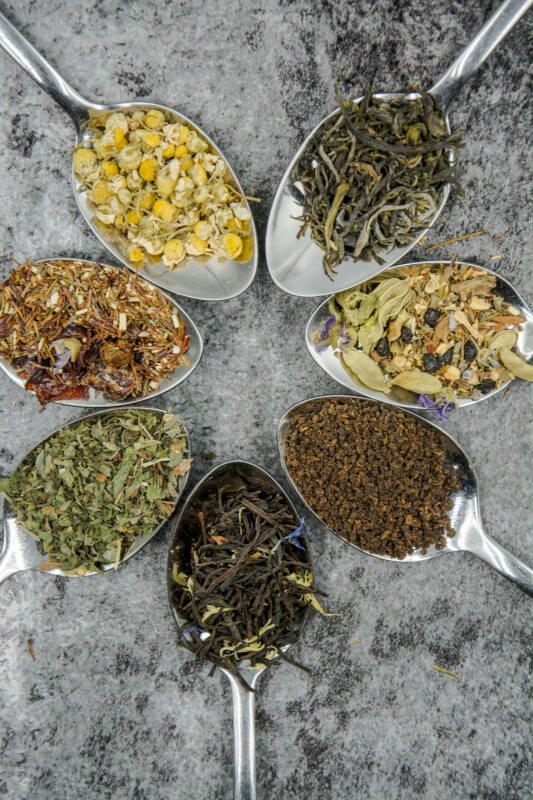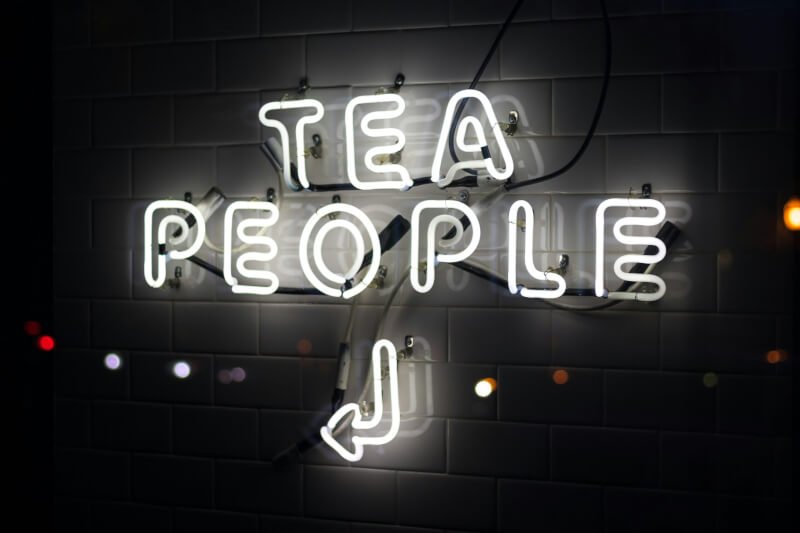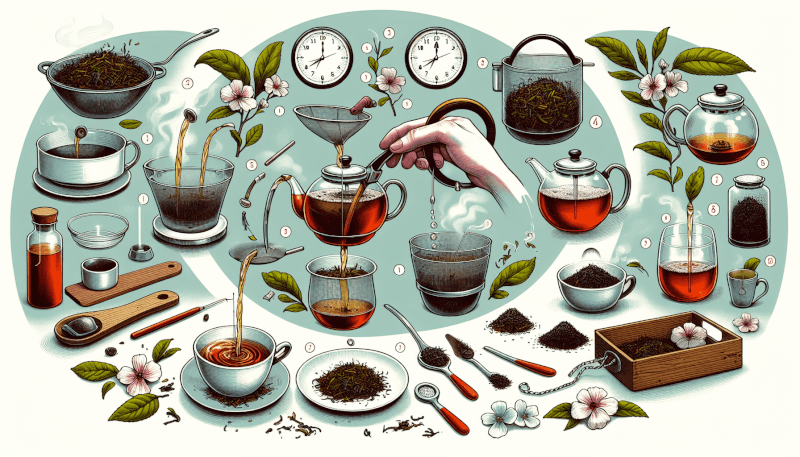Tea lovers, rejoice! If you’ve ever wondered how to brew the perfect cup of tea using loose leaves, look no further. This article will guide you through the simple yet essential steps to ensure you savor every sip of your favorite brew. From choosing the right tea leaves to steeping them, we’ve got you covered. So grab your favorite mug, put on the kettle, and let’s unravel the art of brewing tea with loose leaves. Whether you’re a tea connoisseur or just starting your journey into the world of loose-leaf teas, this article will have you brewing like a pro in no time.

Choosing Loose Leaf Tea
When it comes to choosing loose leaf tea, it’s important to consider the tea type. There are various types to choose from, including black tea, green tea, white tea, oolong tea, and herbal tea. Each type has its own unique flavor profile and health benefits, so it’s worth experimenting with different varieties to find your favorites.
In addition to considering the tea type, look for high-quality loose leaf tea. The quality of the tea leaves can greatly impact the taste and aroma of the brew. Look for teas that are made from whole tea leaves, as opposed to broken leaves or tea dust. The whole leaves tend to have a richer flavor and aroma, making for a more satisfying cup of tea.
Another important factor to consider is the origin and processing of the tea. Different regions produce teas with distinct characteristics. For example, Darjeeling tea from India is known for its floral and muscatel flavors, while Chinese green tea often has a delicate, vegetal taste. Additionally, the level of processing can affect the taste of the tea. Some teas are lightly processed, preserving their natural flavors, while others undergo more extensive processing for a bolder taste.
Gathering Essential Equipment
Before you can start brewing loose leaf tea, it’s essential to gather the right equipment. First and foremost, you’ll need a teapot or an infuser. A teapot is ideal for brewing larger quantities of tea, while an infuser can be placed directly in your cup or mug for a single serving. Choose a teapot or infuser that suits your personal preferences and style.
Next, you’ll need a kettle or a hot water source to heat the water. It’s important to choose a kettle that is suitable for heating water to the desired temperature. Electric kettles are convenient and often come with temperature settings for different types of tea. If you prefer to use a stovetop kettle, make sure it has a reliable whistle or temperature gauge to help you achieve the perfect water temperature.
To ensure that you brew your tea for the correct amount of time, it’s helpful to have a tea timer or a watch with a timer function. Steeping time can greatly impact the taste of the tea, so having a reliable means to keep track of the time is essential.
Lastly, make sure you have teacups or mugs on hand to serve your brewed tea. Choose cups that are comfortable to hold and that allow you to fully savor the aroma and flavors of the tea.
Measuring the Tea Leaves
To achieve the perfect cup of tea, it’s important to measure the right amount of tea leaves. The appropriate amount can vary depending on personal preference and the desired strength of the tea. A general guideline is to use approximately one teaspoon of loose leaf tea per cup of water.
There are two common methods for measuring loose leaf tea: using a teaspoon or using a scale. If you prefer a simpler approach, a teaspoon can provide a rough estimate of the tea quantity. However, for more precise measurements, using a scale can ensure consistency and accuracy in your brew.
Heating the Water
Choosing the right water temperature is crucial for brewing loose leaf tea. Different types of tea require different temperatures to extract the optimal flavors and aromas. As a general rule, delicate teas such as green and white teas are best brewed with water temperatures below boiling, around 160-175°F (70-80°C). Black teas, on the other hand, can withstand higher temperatures and are usually brewed with water just off the boil, around 200-212°F (90-100°C).
Once you have determined the appropriate water temperature, you can proceed to boil the water. Whether you are using a kettle on the stovetop or an electric kettle, make sure the water reaches the desired temperature before proceeding to the next step.
In some cases, you may need to cool the water if it has been brought to a full boil. This is particularly important for delicate teas that can become bitter if brewed with water that is too hot. Simply allow the water to cool for a few minutes to reach the desired temperature.

Steeping the Tea
To ensure a flavorful and aromatic cup of tea, there are several steps to follow when steeping loose leaf tea. First, it is recommended to preheat the teapot or mug by rinsing it with hot water. This helps to maintain the desired temperature of the brewed tea.
Next, add the appropriate amount of tea leaves to your teapot or infuser. As a general guideline, use approximately one teaspoon of tea leaves per cup of water. Adjust the quantity according to your personal taste preferences.
Carefully pour the hot water over the tea leaves, ensuring that they are fully submerged. This allows the water to extract the flavors and aromas from the tea leaves. It’s important to avoid using boiling water for delicate teas, as it can scorch the leaves and result in a bitter brew.
Once the hot water has been added, set a timer to ensure the tea steeps for the correct amount of time. The steeping time can vary depending on the type of tea and personal preference. Typically, black teas are steeped for 3-5 minutes, while green and white teas require shorter steeping times of 1-3 minutes. Herbal teas often benefit from a longer steeping time of 5-7 minutes.
During the steeping process, feel free to adjust the time according to your taste preferences. Longer steeping times will typically result in a stronger, more robust flavor, while shorter steeping times will yield a milder taste.
Straining or Removing the Leaves
Once the desired steeping time has elapsed, it’s time to strain or remove the tea leaves from the brewed tea. If you are using an infuser in your cup or mug, simply lift it out and set it aside. For teapots, you can either use a strainer to separate the tea leaves from the liquid or pour the brewed tea through the teapot’s built-in strainer.
Straining the tea helps to remove any remaining tea leaves and ensures a smooth, enjoyable drinking experience. It also prevents further steeping, which can result in a bitter taste if left for too long.

Enjoying the Tea
Now comes the most delightful part of the tea brewing process – enjoying the aromatic and flavorful cup of tea you have created! Take a moment to appreciate the beautiful color, aroma, and taste of the tea.
Sip the tea slowly and savor the flavors. Pay attention to the nuances and subtleties that each tea type offers. Take note of any particular notes or undertones that you can detect.
If you prefer, you can enhance the tea by adding a splash of milk, a drizzle of honey, or a squeeze of lemon. These additions can complement certain types of tea and add a touch of sweetness or tartness to your brew. However, it’s important to note that not all teas pair well with milk or lemon, so it’s best to experiment and discover your personal preferences.
To enhance the tea drinking experience even further, consider pairing your cup of tea with appropriate snacks. For example, delicate green teas can be enjoyed with light, savory biscuits or pastries, while robust black teas can be paired with rich, chocolatey desserts. Let your taste buds guide you towards the perfect tea and food pairing.
Storing Loose Leaf Tea
Proper storage is essential to preserve the flavor and freshness of loose leaf tea. To keep your tea at its best, it’s important to store it properly.
Firstly, transfer your loose leaf tea to an airtight container. This will protect the tea from exposure to air and prevent it from absorbing any unwanted odors.
Next, choose a cool and dark place to store your tea. Avoid storing it in direct sunlight or near sources of heat, as this can degrade the quality of the tea. A pantry or cupboard away from the stove or natural light is an ideal location.
Lastly, be mindful of avoiding moisture and strong odors when storing your loose leaf tea. Moisture can cause the tea leaves to become damp and lose their aroma, while strong odors can permeate the tea and affect its flavor.

Experimenting with Tea Variations
Brewing loose leaf tea provides endless opportunities for experimentation and exploration. Once you have mastered the basics, feel free to venture into the world of tea variations.
Try different tea types and blends to discover new flavors and aromas. You may find that you prefer the floral notes of a Darjeeling black tea or the earthy flavors of a Pu-erh tea. By exploring different varieties, you can expand your tea palate and find your own personal favorites.
In addition to trying new teas, consider adjusting the steeping time and temperature to further customize your brew. While general guidelines exist, personal taste preferences can greatly influence the ideal steeping parameters. A longer steeping time may result in a stronger, more robust flavor, while a lower temperature may bring out more delicate, nuanced notes.
For the adventurous tea lover, exploring tea-infused recipes can be a wonderful way to incorporate tea into your culinary creations. From tea-infused cakes and cookies to savory dishes with a tea marinade, there are endless possibilities to experiment with flavors and unlock the versatility of tea.
Cleaning and Maintaining Tea Equipment
To ensure the longevity and functionality of your tea equipment, it’s important to clean and maintain it regularly. Rinse the teapot, infuser, and cups with warm water after each use to remove any residue or tea stains.
Avoid using harsh detergents or soaps, as they can leave behind unwanted flavors or residues. Instead, a gentle cleaning with warm water and a soft cloth or sponge is usually sufficient.
Maintain the tea equipment by periodically checking for any signs of wear or damage. This includes inspecting the teapot for cracks, loose handles, or chipped spouts. Address any issues promptly to prevent further damage and ensure the longevity of your tea brewing tools.
By following these simple steps and incorporating your own personal touches, you can embark on a delightful tea brewing journey with loose leaf tea. Cheers to a warm cup of flavorful bliss!


